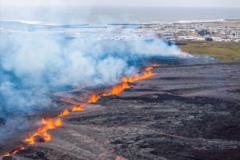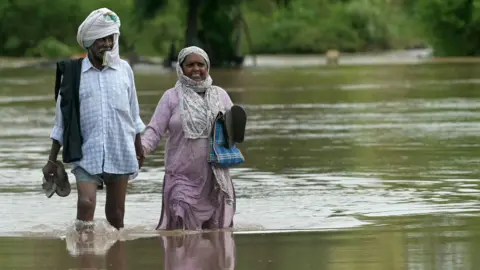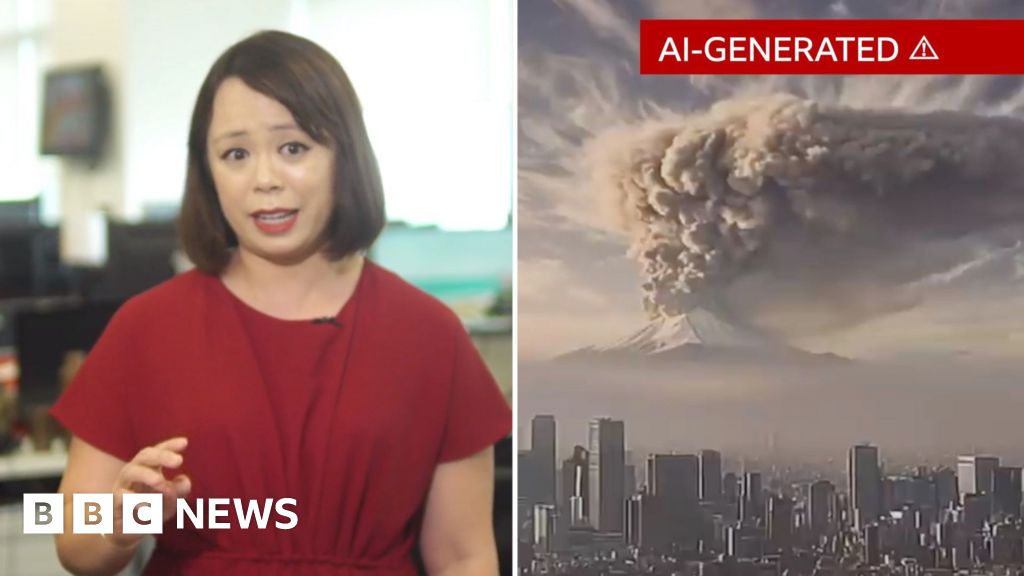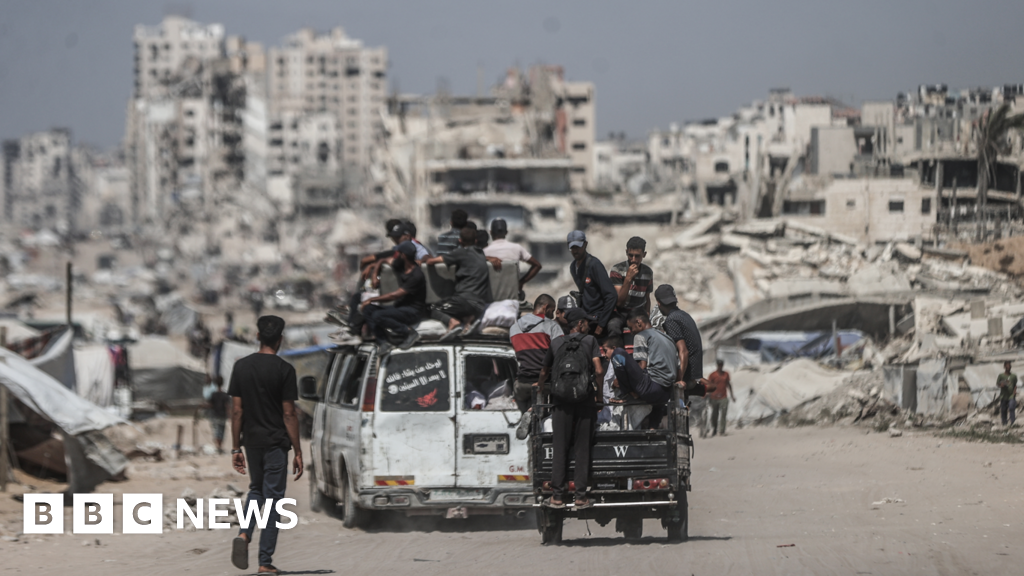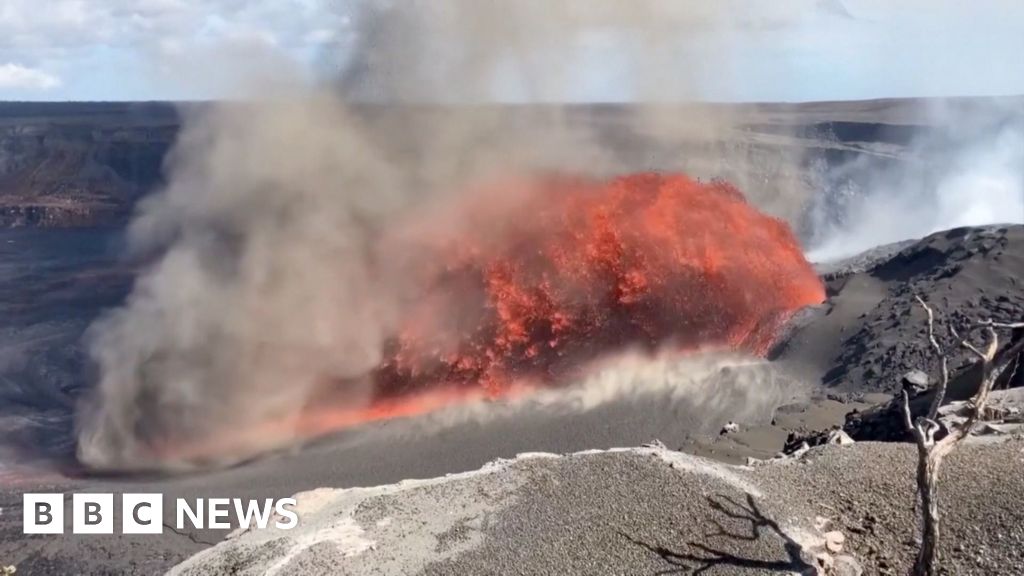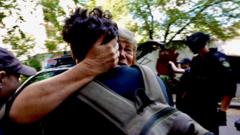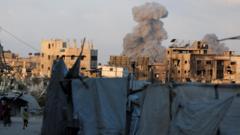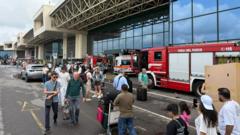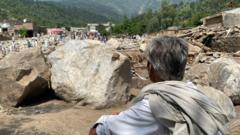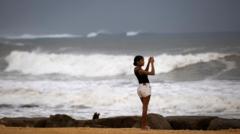Tourists and residents have been forced to evacuate the town of Grindavik in south-west Iceland after a significant volcanic eruption unfolded in the early hours of the morning. The volcano began erupting, emitting vivid orange and red lava, and resulted in a fissure spanning 1.2 kilometers (approximately 0.75 miles) in length cracking the ground. The region has experienced a series of earthquakes, heightening fears for the safety of locals and visitors.
The eruption threatens not only Grindavik but also the well-known Blue Lagoon spa, making it a critical situation for both the local populace and the tourist industry. Reports indicate that while efforts were made to evacuate, some residents chose to stay, clinging to their homes. Local resident Asrun Kristinsdottir spoke with urgency about the moment she heard the emergency sirens, highlighting the constant earthquakes that accompanied her preparations to leave.
Authorities, including the Icelandic Meteorological Office (IMO), noted the breaching of protective barriers around the town as a new eruption fissure appeared just a few hundred meters inside. Ulfar Ludviksson, the regional police commissioner, emphasized the need for people to vacate the danger zone, warning of potential lava encroachment into inhabited areas. A break in a hot water pipe in northern Grindavik confirmed significant geological shifts within the town itself.
Thormar Omarrson, who once operated a pizza restaurant in the town, shared his heartbreaking decision to leave Grindavik after previous warnings from authorities in 2024 regarding volcanic risks. He expressed sorrow about abandoning a community that has been home for generations, indicating that some residents resisted evacuation efforts, favoring their homes over following safety directives.
Since a mass evacuation in 2023 due to imminent dangers posed by volcanic activity, the roughly 4,000 residents of Grindavik have faced ongoing threats from multiple eruptions, with the latest magma formation extending over 11 kilometers (6.8 miles) from the crater series. Meteorologists reported that the ongoing volcanic activity is the longest observed since November 2023.
With prevailing winds predicted to carry gas emissions northeast toward the capital region, concerns for air quality have risen. The eruption commenced at around 9:45 AM local time, following an uptick in seismic activity at the Sundhnuk crater range, a phenomenon that has recurred on the Reykjanes Peninsula since 2021. Historically, the region's previous volcanic activities occurred over an extended period, creating a notable event every 800 years.
Iceland, home to 33 active volcanic systems, lies above the Mid-Atlantic Ridge, a tectonic boundary that significantly contributes to its geological activity. The eruption's dramatic visuals underscore the fragile relationship between humans and nature in this striking landscape.

